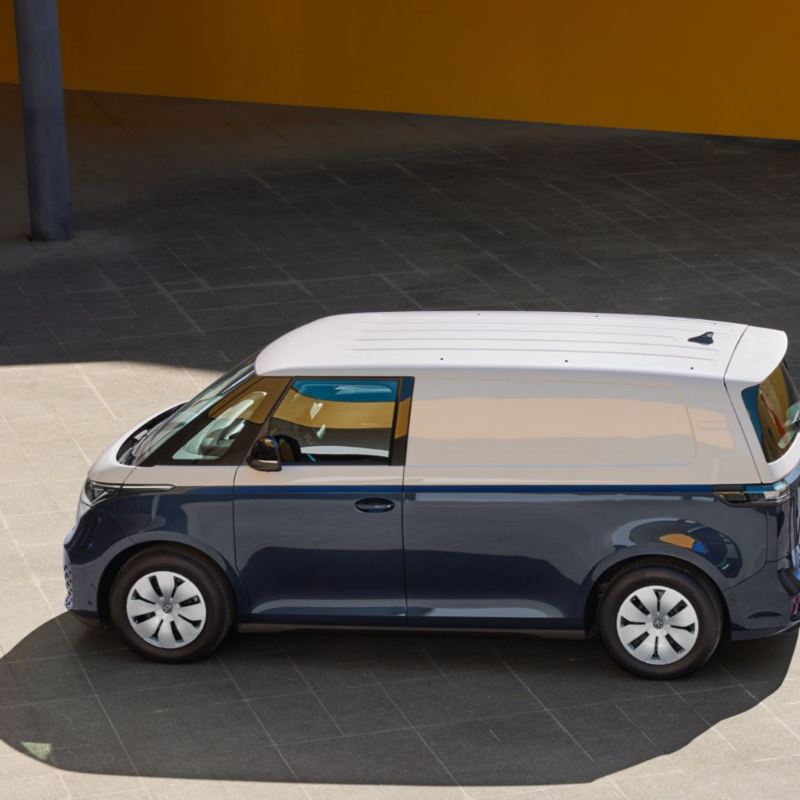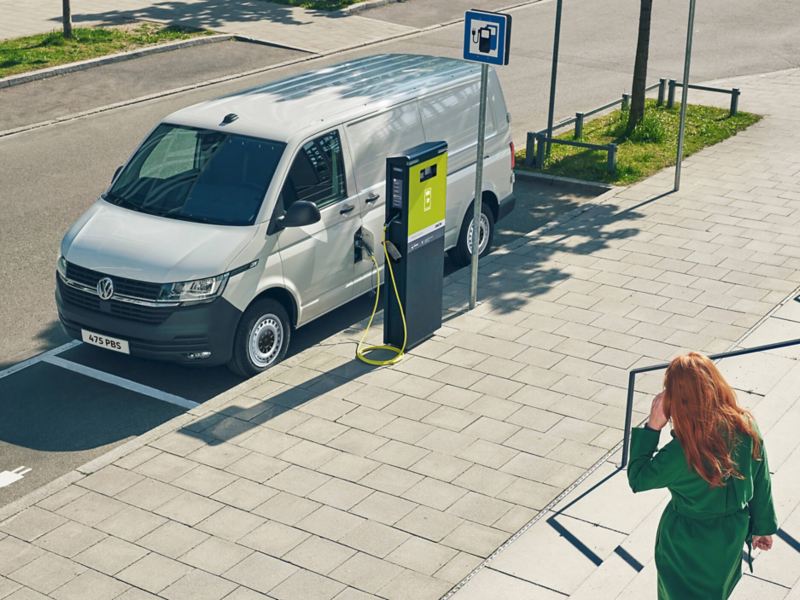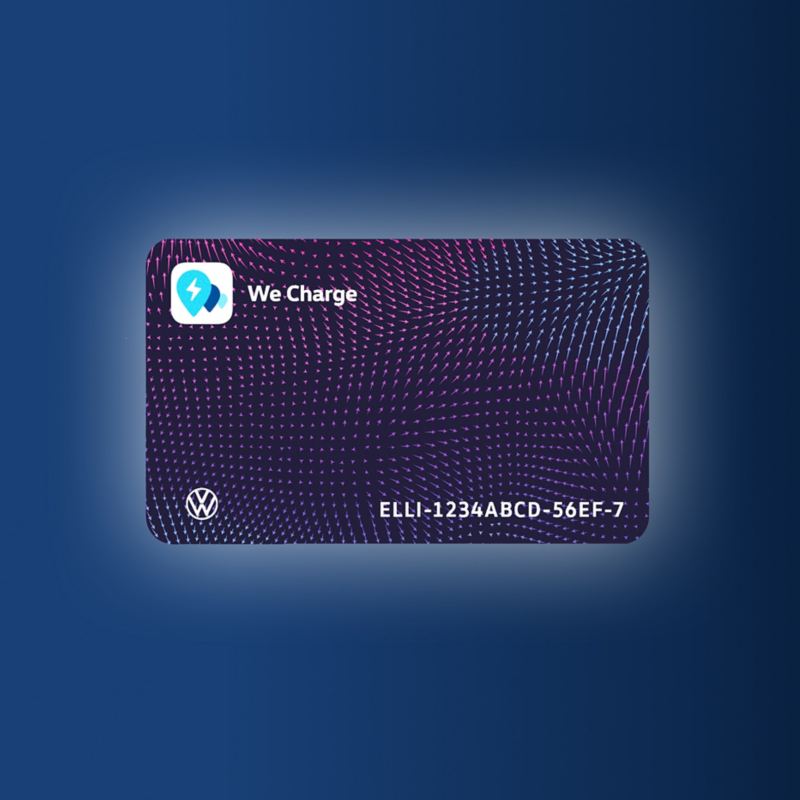Electric vehicles as electricity storage
Find out more about electricity storage in electric vehicles here:
- Electric vehicles can themselves become a battery and store electricity.
- Smart power grids take in energy and then discharge it again, on demand.
- Electric mobility, therefore, has huge potential to help with the energy transition.
Store electricity and use it as needed
The energy transition is in full swing, with more and more electricity obtained from renewable energy. Water, solar, and wind have overtaken coal as the most important energy source, although the greatest challenge has not yet been solved: namely, these energy sources are not available all the time. The wind blows when it blows, and the sun shines when it shines. On top of that, we have extreme events like big autumn storms, and it is very hard to predict how they will develop or how intense they will be. Therefore, it would be ideal if we could store excess energy and use it later when needed.
Hand in hand: E-mobility and the energy transition
What if the vehicle of the future didn't just drive with a battery, but actually became one? Electric vehicles are a possible answer to the question of future energy storage. Most vehicles are standing around for up to 23 hours a day. During this time, the batteries of electric vehicles could be used to store electricity.
The idea behind this is known as 'vehicle-to-grid', or V2G for short. How does this work? Electric vehicles are not just plugged in for charging – they are intelligently linked to the power grid. Energy management systems (EMS) automatically coordinate the input and output of energy.
Energy management aims to temporarily store excess energy – from your solar panels, for example – in the vehicle. This energy can then be drawn from the vehicle as needed, to cut your electricity costs, or it can be fed into the grid. Despite all this, the battery will never be fully discharged, so the vehicle will always be fully functional and ready to start.
In Denmark, a one-year pilot with a smart grid has already taken place. The electric vehicle owners who took part earned €1,300 on average by feeding energy from the batteries back into the public grid. The UK government have supported a number of projects under the “V2X Innovation Programme” to drive the development of bi-directional hardware.
The EMS is the brain of your home’s electricity network. It intelligently coordinates the electric vehicle, wallbox, solar system, heating, and so on as required.

Bidirectional charging
Bidirectional charging is essential for an electric vehicle to become part of an intelligent electricity grid. In this process, the battery doesn't just take in energy but also discharges it again.
For this to happen, electric vehicles must have suitable connectors that enable power to be fed in. And the wallbox in your home also has to support smart grid technology.
"For the grid operators it's important to be able to control how the grid connection points, behind which electric meters are connected, behave," explains Dr. Gunnar Steg, the expert on vehicle-network integration at Volkswagen Group Charging GmbH (Elli). This is especially crucial if energy consumption or electricity feed-in differs from anticipated levels – for example if the sun doesn't shine as forecast, or the wind is stronger than expected. To keep the grid stable, operators need to react to these fluctuations. And in the future, this is where the EMS will come into its own.

Using the electric vehicle for home storage: For example, using solar energy
Here's a scenario in a family home: solar panels are installed on the roof, a heat pump keeps the home warm and cosy, and the electric vehicle is plugged into a wallbox in the garage. The EMS, a smart computer-aided system, coordinates all appliances linked to the local grid. "If, for example, less energy is available than anticipated, the electric vehicle will charge at a lower rate or the heat pump will turn off temporarily," explains Gunnar.
If, on the other hand, there is excess energy, the electric vehicle can be charged at a higher power level. Volkswagen is also working on technology that would enable its electric vehicles to charge and also discharge energy so that a vehicle's spare energy could flow back into the house to temporarily cover energy demand. Volkswagen has already carried out a successful pilot project with the Fraunhofer Institute. "The possibility of discharging would allow even better integration of renewable energy," continues Gunnar.

Bidirectional charging needs communication
In the future, the various grid participants will need to be able to communicate with each other for the EMS to work reliably. "Volkswagen has adopted the uniform communication standard EEBUS, which enables smart connectivity between household appliances and energy efficiency applications using energy management systems. The idea is to make charging technology and household technology as compatible as possible," explains Gunnar. The EEBUS initiative aims to create a standardised language for all appliances that transcends national borders and individual industries.
The ISO standard 15118 is implemented in ID. Buzz, to enable automated communication between the vehicle and charging points. This standard defines specifications for vehicle-to-grid communication for electric vehicle charging, enabling what's known as plug-and-charge: charging begins and ends simply by plugging in or unplugging the charging cable. In future, this standard will also be important for feeding electricity back into the grid.
"Smart energy management gives electric vehicle drivers the reassurance that they will reach their destination – regardless of whether the sun is shining or an autumn storm is raging."
If electric vehicles and wallboxes are going to be communicating with each other soon, in future all drivers will need to do is plug in the charging cable. The EMS, working in tandem with the vehicle, will take care of the rest. The same applies to the billing process with energy suppliers, who in future will pay for the service provided by electric vehicles. Expert Gunnar Steg compares the EMS to a "vendor tray packed with offers", from which the best one for the vehicle will be picked. "The vehicle's algorithms will decide whether the price for discharging is suitable," he explains.

The intelligent use of the storage capacity of electric vehicles offers huge potential for the energy transition
Electric vehicles could play a pivotal role in the energy transition – but, in case of doubt, will grid operators have priority? Gunnar assuages any concerns: "Of course, there is the challenge of alleviating short-term bottlenecks. In these cases, the EMS would say, for example: 'For the next ten minutes you can’t charge at the planned power level, but after that, you’ll have maximum power available again'." So drivers can rest assured that they will be able to achieve the pre-set minimum range. The charging process, which will be largely invisible to customers, will maximise users' cost-benefit ratio with no extra effort or inconvenience.




